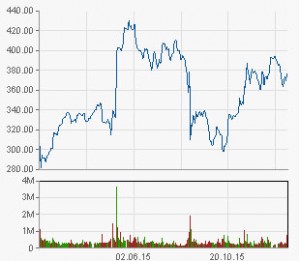EFSA announces: “Pesticides: breakthrough on cumulative risk assessment”
EFSA announced a breakthrough on cumulative risk assessment recently, you find the annoncement here: EFSA and its European partners have taken a major step forward in their work on assessing the cumulative risks from exposure to pesticides.
 This is a major step in cumulative and probabilistic risk assessment (RA) in the field of dietary safety. I follow this topic with big interest and gained knowledge about the possibilities and limitations in this approach.
This is a major step in cumulative and probabilistic risk assessment (RA) in the field of dietary safety. I follow this topic with big interest and gained knowledge about the possibilities and limitations in this approach.
The background for the requirement of cumulative RA is legislated by:
Reg. (EC) No. 1107/2009, Art. 4: “residues of plant protection products … shall not have any harmful effects on human health, including that of vulnerable groups, … ,taking into account known cumulative and synergistic effects”
Up to now dietary risk assessments are conducted using deterministic models, i.e. point estimates of exposure vs hazard. Probabilistic models are under development in order to assess the variability of exposures (probabilistic risk assessment) and the exposure to chemicals with common effects to target organs (cumulative risk assessment). With support of the EU (ACROPOLIS project) a web-based software platform called MCRA (Monte Carlo Risk Assessment) was developed by RIVM to conduct probabilistic exposure and risk assessment of chemicals in the diet according to EFSA guidance documents.
EU provided further founding to the MCRA project (EU project EuroMix). Further cumulative assessment groups of molecules will be established.
The topic is highly complex and certain “black-boxes” in the software tool MCRA are not verifyable. With the announcement from EFSA input data to the model (consumption, background residues from market-bask surveys, variability factors, etc.) will become available to the industry and NGOs.
EFSA is establishing a data warehouse and thereby seeking transparency in order to gain trust of consumers.

 As a specialist in dietary safety I trust in the safety of agrochemical products, I rarely buy organic food. I also believe that modern agrochemical products are required to provide food for a growing population on our planet. However I do not appreciate the pressure from major investors to dominate and control the future of the responsible companies in the field.
As a specialist in dietary safety I trust in the safety of agrochemical products, I rarely buy organic food. I also believe that modern agrochemical products are required to provide food for a growing population on our planet. However I do not appreciate the pressure from major investors to dominate and control the future of the responsible companies in the field.